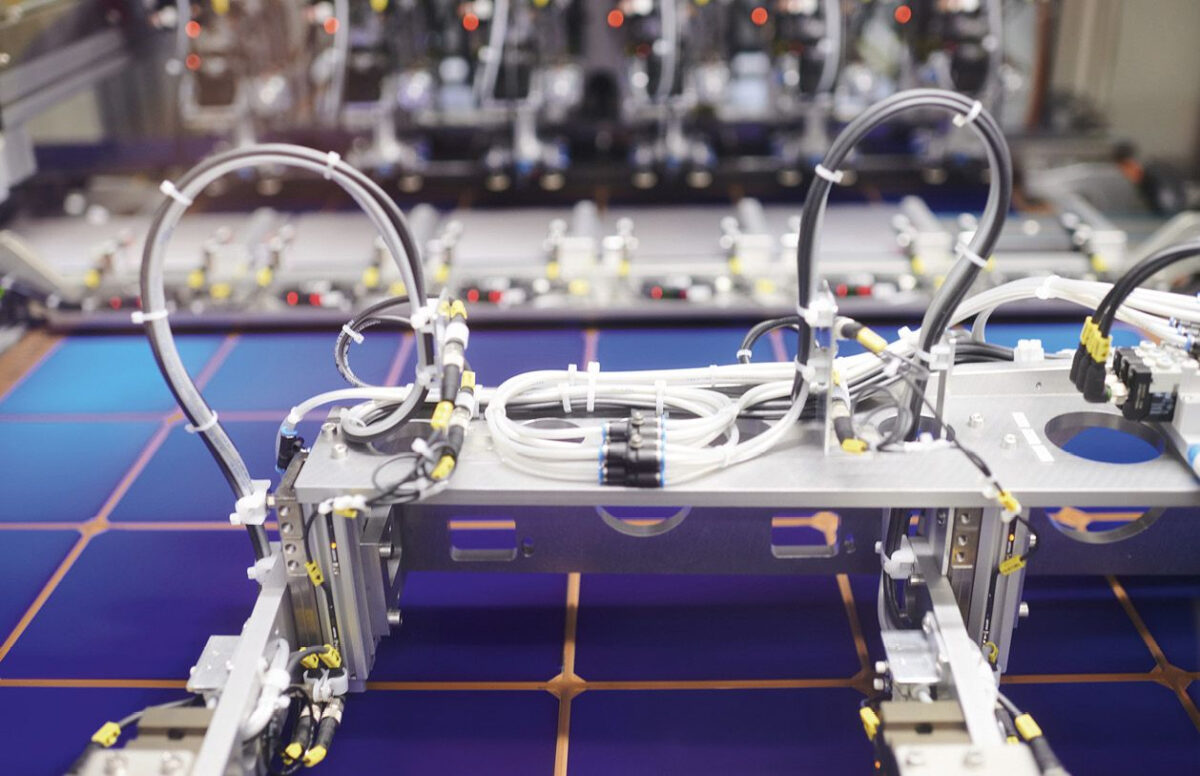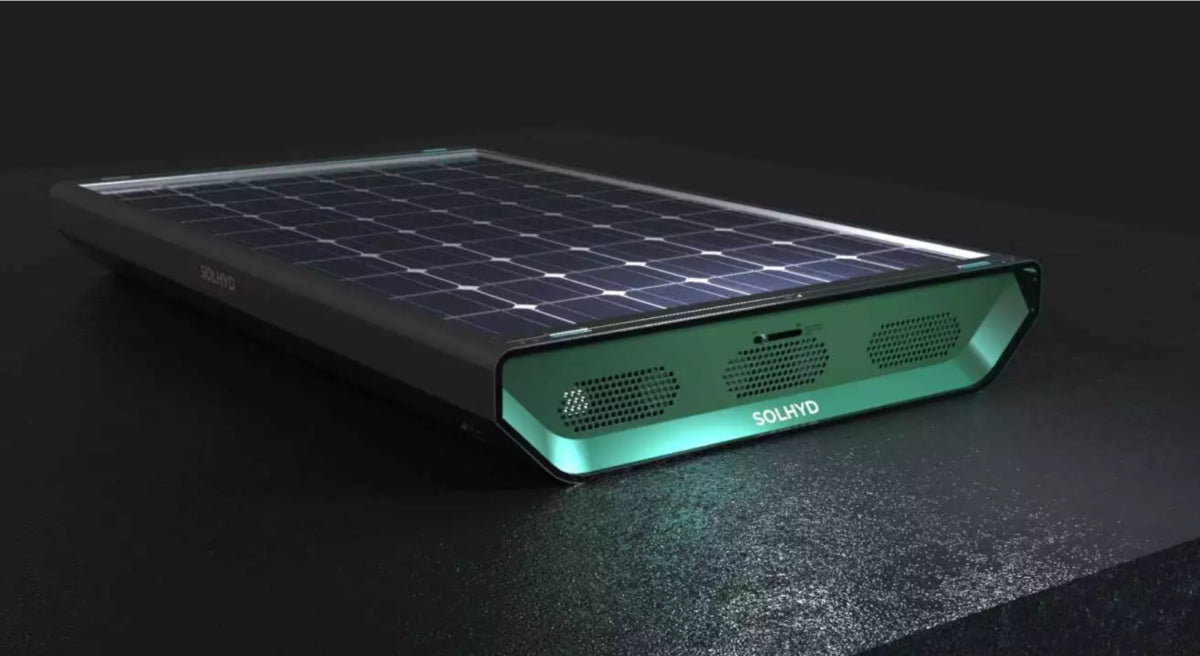https://www.pv-magazine.com/2023/12/09/weekend-read-europes-subsidy-conundrum/
Europe’s subsidy conundrum

ESIA wants to see European manufacturers supply 40% of European solar demand by 2030.
Photo: Meyer Burger
A recent ESIA recommendation paper illustrates the ways in which European policymakers could support a domestic PV production industry. The industry alliance paper sets out two key principles: support for local PV component content, and the creation of a protected segment of the market that would only be accessible to European manufacturers.
At the same time, the authors of the paper stress that they are not asking for import duties or minimum import prices. They explicitly write that, outside of the protected-market volumes they want to have introduced for European manufacturers, free-market prices should reign to “leave the other segments free of NPCs (non-price criteria) in order not to impact the accelerating pace of cost-effective solar PV development.”
This assurance refers back to a recent history of misplaced protection attempts. In 2013, when the European Union tried and failed to support manufacturers with the introduction of import duties and minimum prices, these measures hampered the industry for three years while virtually none of the domestic manufacturers targeted survived in the solar industry.
Bonus payments
Other than the desire for a designated chunk of the marketplace for European manufacturers, there is nothing especially revolutionary about the content of this recommendation paper. The basic principle is that PV modules with more local content should be eligible for higher bonus payments.
ESIA lays out how its members would like to see the creation of an environment in which there is a realistic chance to re-establish a European PV industry that could grow to a level where it could supply 40% of estimated European solar demand of 100 GW annually by 2030. In order to achieve this goal, ESIA proposes that rising yearly solar generation capacity volumes should be included in “resilience auctions” and “resilience procurement” exercises that would only be accessible to European manufacturers.
For the private sector, ESIA suggests compensating customers directly for any price differential they incur by purchasing components with a higher European content than the benchmark set.
Likely costs
ESIA also describes mechanisms as to how such cost differentials could be established and suggests they should be reviewed on a regular basis. Again, those proposals contain nothing extraordinary and have clearly been devised with the objective of avoiding any semblance of disadvantage for other market participants. The chances that such proposals could actually achieve Europe’s solar manufacturing goal can only be assessed by examining the implications for European PV manufacturers.
A closer look at the likely costs of the support measure outlined, (see table below), indicates that these could be much lower than industry insiders might expect – certainly when compared to the amounts the European Union spends on other industries on a regular basis.
ESIA assumptions on future EU subsidy spending, resilience auctions, and protected PV installations
| Annual “resilience” auction corridor as stated in the ESIA paper (GW) | Implied annual “resilience”auction corridor (GW) | Annual protected European PV installations (GW) | Amounts in € billion of annual subsidies required at €0.10 cost differential |
Cumulative sum of spent subsidies (€ billion) | Amounts in € billion of annual subsidies required at €0.15 cost differential |
Cummulative sum of subsidies spent (€ billion) | |
| 2024 | |||||||
| 2025 | 5 | 5 | 6 | 0.6 | 0.6 | 0.9 | 0.9 |
| 2026 | 7 | 9 | 0.9 | 1.5 | 1.4 | 2.3 | |
| 2027 | 10 | 10 | 13 | 1.3 | 2.8 | 2 | 4.2 |
| 2028 | 15 | 19 | 1.9 | 4.7 | 2.9 | 7.1 | |
| 2029 | 22 | 27 | 2.7 | 7.4 | 4.1 | 11.1 | |
| 2030 | 30 | 30 | 37 | 3.7 | 11.1 | 5.6 | 16.7 |
| 2031 | 40 | 4 | 15.1 | 6 | 22.7 | ||
| 2032 | 45 | 4.5 | 19.6 | 6.8 | 29.4 | ||
| 2033 | 50 | 5 | 24.6 | 7.5 | 36.9 | ||
| 2034 | 55 | 5.5 | 30.1 | 8.3 | 45.2 | ||
| 2035 | 60 | 6 | 36.1 | 9 | 54.2 | ||
| 2036 | 65 | 6.5 | 42.6 | 9.8 | 63.9 | ||
| 2037 | 70 | 7 | 49.6 | 10.5 | 74.4 | ||
| 2038 | 75 | 7.5 | 57.1 | 11.3 | 85.7 | ||
| 2039 | 80 | 8 | 65.1 | 12 | 97.7 | ||
| 2040 | 80 | 8 | 73.1 | 12 | 109.7 |
Raising the annual volume of “resilience auction” generation capacity in order to establish predictable, growing demand for European components would give investment assurance for private investors. Here, the ESIA paper states three concrete figures: 5 GW for 2025, 10 GW for 2027, and 30 GW for 2030. As the auctions would only cover part of the market in which European manufacturers would be protected, column four of the table shows the overall protected market volumes, as estimated in accordance with the general aim of reestablishing a 40 GW solar industry in the European Union by 2030.
Considering that solar market prices in November 2023 were at €0.14 ($0.15)/Wp to €0.16/Wp of panel generation capacity produced, a price differential of €0.10/Wp would suffice to bridge the cost gap to establish a state-of-the-art, 100% European manufacturing facility on a multi-gigawatt scale. Taking a further bonus of €0.05/Wp into account for the use of a European-manufactured inverter would see an upper level of €0.15/Wp in support of a 100% European product. Given the fact that the majority of the products would most likely have lower domestic content, the overall costs could be lower than outlined in the table above.
Popular content
Even if we assume that the European Union were to double its 2030 target of 40 GW of annual European production volume,to 80 GW by 2040, and we imagine a worst-case scenario in which European manufacturers make no progress in closing the cost gap, despite having reached multi-gigawatt production volumes – we still come to the conclusion that annual subsidies would be in the range of €8 billion to €12 billion.
EU subsidies
That figure should be compared to the €450 billion that the European Union annually spends on agricultural subsidies, or the billions of euros Germany is willing to grant to highly profitable semiconductor companies in order to convince them to establish manufacturing sites in Germany. The cumulative sum of subsidies spent over 15 years to 2040, to re-establish a solar industry with at least 80 GW of annual production capacity, would amount to less than a quarter of the annual agricultural subsidies granted in the European Union today.
Of course, it could be problematic to establish new EU industry segments that are dependent on support schemes, since they could have a hard time competing on the global market.
That said, there is still significant value in having a domestic industry capable of supplying at least 40% of the projected demand required for the energy transition. ESIA says that its proposal is “intended as opex [operating expenditure] support for the European PV manufacturing industry.” Will ESIA be able to convince EU governments to make this concession – something that Brussels and European governments have always tried to avoid?
For almost all publicly funded support schemes, the basic rule has been that granting investment subsidies is OK but granting opex support is somehow abhorrent. The reason for that clear distinction is twofold. Firstly, an opex subsidy rises as the companies benefiting from its support scheme grow and expand production. Investment support is a one-time fixed sum. Secondly, there is no real incentive for manufacturers to improve the cost-efficiency of their production processes as long as they benefit from opex support.
This immediately leads to the second drawback of opex subsidies. They isolate the companies selling into this walled-off market segment from market price signals and market price pressure.
Cost pressure is always a driver of innovation. Without declining bonus payments, protected European players could fall behind in their drive for innovation and the cost-gap could widen instead of becoming more narrow. But how can this be avoided?
The described support for the PV industry would need to come with a clear signal that, in the long run, manufacturers would have to be cost-competitive and economically sustainable without external support. Without a time limitation for support, such companies would always be confined to solely supplying the domestic market as they would not be able to compete on price and performance metrics outside the walled-off sandbox in which they would operate.
This dynamic illustrates the necessity of a pre-defined phase-out path for opex subsidies. Without a gradual decline in bonus payments, there is no path to establishing an industry that would actually be self-sustaining and able to compete on the global market.
The big question is whether such an incentive, embedded into the European regulatory framework, would be enough to incentivize private investors to put their own money into PV manufacturing in Europe.
Thus far, the willingness of private investors to make such a commitment has been less than lukewarm. The motivation to invest private capital in PV manufacturing could further deteriorate if the current pricing developments observed in the global solar market continue. Even so, the solar industry may yet benefit from a historical precedent of creating consortia in Europe to counter a lack of private money in production invesment, as the Airbus group did back in the 1970s to establish a civilian aircraft industry.
This content is protected by copyright and may not be reused. If you want to cooperate with us and would like to reuse some of our content, please contact: editors@pv-magazine.com.



